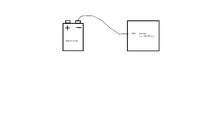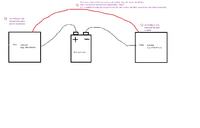belax
Member level 2
Imagine we have two items.
1)A "U" volts battery with two terminals "+" and "-" (e.g. 12V car battery).
2)Thin copper plate of size AxB. It is neutrally charged - number of electrons equal to protons.
I touch a "minus" terminal of a battery with this plate (plus terminal left floating).
The main question of this thread is: What is a surface charge density of plate? (after some instant - when an equilibrium is reached)?
I need this to calculate the static electric field at some distance from the plate
I don't understand how and where to start from.
Thank you.
1)A "U" volts battery with two terminals "+" and "-" (e.g. 12V car battery).
2)Thin copper plate of size AxB. It is neutrally charged - number of electrons equal to protons.
I touch a "minus" terminal of a battery with this plate (plus terminal left floating).
The main question of this thread is: What is a surface charge density of plate? (after some instant - when an equilibrium is reached)?
I need this to calculate the static electric field at some distance from the plate
I don't understand how and where to start from.
Thank you.

